|
Stone Ridge Eventing Winter Series I was a great event for AAF students and boarders! We had beautiful weather and Stone Ridge Eventing, put on a spectacular show. It's so helpful and beneficial to have both an event this close to the farm, as well as one held during the off-season. The weekend ended with several freshly minted eventers (horses & riders), as well as those who knocked the rust off after a long time away from the sport. AAF boarder Arden placed 2nd in the Starter division on her new OTTB, Vinny. Evan Niehues (a total newbie to the sport and a relatively new rider) & Tonic survived all three phases & gained tons of confidence. AAF student Stephanie & her mare, Savannah, had a much improved dressage & very forward brave jumping rounds. AAF Boarder, Jamie & Piper had a beautiful dressage test & XC round, impressively both had jumped their first real XC jumps only a week ago! Last but not least, Never Ceasing recovered from the Texas Rose adventure, and took 2nd in the BN division, finishing on his 32 dressage score. Most importantly, he jumped very bravely through the water! Stone Ridge Eventing Winter Series II was held just a few weeks after Winter Series I.
Piney made the move up to Novice, getting a record 29 on his dressage test, and also taking home the T.I.P. Award for the best dressage score by an OTTB at the show. The week prior we held a Claudia Coley dressage clinic at the farm, and she was instrumental in some majorly improved dressage scores out of almost every horse & rider. Piney jumped a double clear SJ and had a very forward/brave/over-jumping XC, with the exception of one bobble on the mound to cabin combination, where he stopped to talk to his friend Tonic and did not jump the second element. He jumped out on his second attempt and finished the course with a giant victorious buck --what a character! Other AAF students each improved in at least one phase. Big congratulations to Denise for finishing her first BN!
0 Comments
We chose to start the recognized eventing season at Texas Rose back in April, with White Stromboli in the Open Prelim....let's just say that event did not go well for many reasons, and ended in my first elimination in 14 or so years. I came home defeated and with a very sore horse.
Flash-forward to November: Never Ceasing had been a consistent performer for more of the season and steadily improved in his training. I thought about entering him in the Novice at Texas Rose, but we decided to play it safe and do one more BN. For dressage, he was relaxed...maybe a little too relaxed. Our test lacked impulsion and was b-o-r-i-n-gggggg. We still earned a 36, putting us somewhere in the middle of the pack. The XC course walked well, but I knew the first water, situated on top of a hill after an up-bank, was going to be very surprising. We cantered out of the start box, and had to ride aggressively to the first fence --not at all like the easy galloping XC course I had a month prior. Piney jumped the first 5 fences, but was SLOW & staring at everything. The nice thing about this horse is he is not a dirty stopper or spooker, but he is a little stubborn, when he decides it's time to go slow to check something out for "safety," there's almost nothing that will change his mind. We jumped up the up bank, Piney saw the brightly colored dyed water, and I could feel his giant heart beating out of his body with terror. He slammed on the breaks, staring at the water....I'm not sure if he stepped back or shuffled his feet, but it was the longest 10 seconds of my life standing there trying to reassure him to walk into the water. He finally went through the water, but was highly suspicious of the next few fences. At one point he saw a golf cart parked near a fence with people INSIDE THE GOLF CART MOVING and completely put on the breaks. I could not get him to focus on the fence at all. The rest of the course was similarly messy, and we picked up another stop at the second water. My coach, Cynthia reminded me that I was on a very green 5-year old and this was the kind of thing that happens and I shouldn't beat myself up over it. I was so disappointed in myself and spent the whole night thinking of how I could have prepared differently or ridden the course differently. The next morning, I pulled Piney's wraps off and found a small swelling on his RF. He jogged sound, but already being at the bottom of the score board, it did not seem like the time to risk injuring or further injuring my horse. We withdrew and headed home, majorly defeated. As one of the closest venues, Heritage Park, is always a favorite show. We had an awesome time with the area IV & Stone Ridge Eventing crew.
Never Ceasing (Piney) improved his dressage to earn a 36 and sit in 4th in the OBN division. I know this horse is capable of much better scores, but I'm still learning just how much he can be pushed in the ring. The dressage judge was not giving points away, and this score put us only 3 points from first - less than a rail! Heritage Park updated their XC course with a new track and some new fences. As soon as we left the start box, I knew we were going to have a fantastic round. He jumped every fence out of stride and we came home with a double clear. The next day, show jumping was bright & loud, up on the hill in the grass ring, & Piney felt very green. Luckily he does not like to touch the fences, so despite a few awkward distances, we pulled off another double clear. We finished the weekend in 4th place in our division. As I was packing up to go home, I learned that they were announcing the Thoroughbred Incentive Program Awards (T.I.P.) for the best score by a Thoroughbred at each level (across all divisions), and was surprised to find out that Piney won for the Beginner Novice level and also received $50 in prize money! 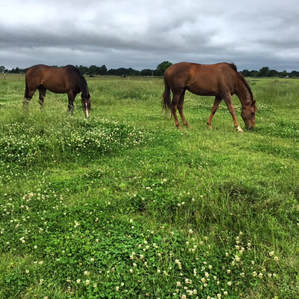 Good pasture management and is vital to providing a good grazing environment for horses Good pasture management and is vital to providing a good grazing environment for horses I've owned and boarded a lot of OTTBs and thoroughbreds at this point....If there's one thing I'm good at, it's putting weight on these "hard-keepers" and keeping them looking good even during the winter. Here are some things I've learned over the years: 1) Routine: All the horses have access to hay or pasture 24/7 and get fed grain twice a day. Our hay is baled off our own land or neighboring pastures, so the horses don't get a large variation in nutrition from hay shipment to hay shipment. For me, the benefits of feeding large roundtables in the winter, when there is little to no grass, significantly outweigh any negatives. Access to continuous forage is absolutely necessary to prevent ulcers (which 90% of OTTBs have at some point), helps alleviate boredom which causes bad habits, and also makes the horses less "starving" at feed time. When the weather is bad, I feed the roundtables liberally and clean up any bad hay they won't eat with the tractor. In my experience, a well-fed horse will not often eat plants or weeds they shouldn't. I don't try to force the horses to eat moldy, peed on, or weedy hay...even if that means some of it is wasted. Two or three smaller grain meals are significantly more digestible than a single large meal. Feeding twice a day also gives me the opportunity to check on every horse and make sure they have normal appetites and no other injuries. I always add water (warm water in winter) to all grain meals. This helps with digestion preventing choke, aids in keeping the horses hydrated, and also encourages them to eat any powdery supplements they might try to filter through. In the winter, I try to set up heated tanks or I go out and break the ice on frozen water troughs multiple times a day. I do whatever I can to encourage as much hydration as possible. Early detection is key! Feed changes should be made slowly, but I also try to match the horse's feed amount to how much work they are in. If I have a horse that is being hauled to horse shows 6+ hours away, two weekends in a row, he's probably going to lose some weight. That horse is going to need a little extra food the week prior to and post-competition. Likewise, if a boarder is going away on vacation and their horse is going to get 3 weeks off, they probably don't need as much feed. If I see a horse start to lose or gain a significant amount of weight, I immediately make adjustments. 2) Feed: My magic feed formula is Powell's Easy Choice + Rice Bran + Alfalfa. All the TBs on my farm get Powell's Easy Choice, a 14% Protein 6% Fat Feed. I like this feed because there aren't big fluctuations in formula, it's low in sugar/corn, and it's formulated to meet the vitamin/mineral requirements of horses in this region. I've had horses on other popular brands of feed such as Nutrena and Purina, and they did not look as good as the horses on Powell's. I had two horses come to me on other brands of feed this past summer and they had significantly worse coat bleaching and hoof quality issues than other horses, which are both symptoms of vitamin/mineral imbalances. For horses in hard work or those that don't gain or maintain enough on just the Powell's feed, I add in rice bran as a source of fat. Almost all TBs will need alfalfa (I like either chaffhaye real alfalfa hay), for at least part of the year. Alfalfa is a fiber source even picky eaters will enjoy, it adds protein, and it's high in calcium acting as a good stomach acid buffer. For this last reason, it's also great for horses prone to ulcer or other stomach issues (like most TBs). 3) Supplements/Vitamins/Minerals: Too many supplements are unnecessary and can even be harmful. Everyone should know the ingredients and nutrition levels present in each supplement they feed their horse and how all these work together and in combination with the rest of the horse's feed. I put all my personal horses on a hoof supplement like Farrier's Formula or SmartPak's SmartHoof, that is high in biotin, copper, and zinc. This area has high iron content which can cause dry coats and brittle hooves unless it is balanced with copper and zinc. For seriously hard keepers or those in hard work, I will often add a splash of vegetable oil for calories. When the weather is particularly hot or cold, I give all horses electrolytes or a little table salt to encourage drinking. 4) Exercise: Moderate exercise will often make a horse gain weight and look better. I've had a few horses that no matter how much you feed them always look "ribby." These horses often have little muscling or fat along their topline and have big "hay bellies" that seem to expand causing more ribbiness. An easy solution to this is moderate exercise! Just 2 days a week of light hacking/trail riding can make a HUGE difference for these horses. Most thoroughbreds want to work, and moderate exercise can also help encourage them to have a healthy appetite and stay focused on eating forage during the day. 5) Turnout, Shelter, Stalls, Flies, & Weather: We make an effort to keep the pastures mowed and free of an excessive amount of weeds and manure. Dragging the pastures in the summer is a good way to break up mature piles and allow them to decompose. I try to let each field rest for a minimum of a few weeks every year so the grass can recuperate. This also helps "heal" excessively muddy or worn down areas. A lot of horses will actually lose weight in the summer, even when the grass is plentiful. Why?...Flies! Many of my horses are very dramatic and will literally run away from them. I have one horse in particular who unless he has 24/7 access to a stall will stomp his shoes off, pace the fence, and loose hundreds of pounds. Fly spray, fly sheets, and adequate shelter can help with this. The heat during Arkansas summers can literally "sweat the pounds" off a horse. Some horses will have to spend the day or part of the day inside if they are going to maintain condition. For other horses, time in a stall causes anxiety and stress, no matter what the weather is. While it might seem "nice" to bring her in out of the bad weather, she will spend the entire time frantically running in circles, screaming for her buddies, and certainly not eating. These horses need to stay outside happy in the herd! We've all heard that horses will lose weight in the winter--but there's no reason for this. While some don't, many TBs, especially pasture kept ones, have to wear blankets. These horses have been kept in controlled mostly indoor environments for their entire lives as have their ancestors for hundreds of years. I blanket all clipped horses under 60 degrees and most unclipped horses if it's below 30, staying frozen during the day, or if it's below 50 and precipitating. If your horse is shivering, they are well past the point of needing a blanket! 6) Ulcers: OTTBs, horses in heavy training, and horses that are traveling, are all at a major risk of developing ulcers. Any horse I'm showing regularly gets Aloe Vera Juice added to their feed twice daily --it's cheap, is proven to help, and has no drawbacks! If I am going on a particularly long or stressful trip, I will give my horses 1/2-1 tube of ulcer guard on the day I leave and every day I am gone. Horses displaying major sings of ulcers often need a full 28-day course of omeprazole or ranitidine, but I usually leave this up to the discretion of my vet. In general, I try to create an environment for the horses that is as consistent, predictable, and low stress as possible. All these factors above also contribute to a very low rate of colic for horses on my farm! If you have any questions about my feeding program and routine, just ask! Send me an email anytime at christy00821@yahoo.com. 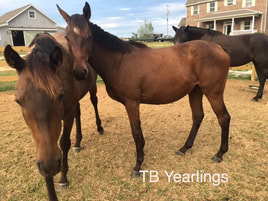 They say that time accelerates as you get older. It must be true, because here it is, halfway through September. I feel like we still have so much left to accomplish before winter, but in reality, we expanded four pastures onto the new land, spent countless days cleaning up the property and starting on a new border fence, got additional acreage along the driveway fenced, and completed numerous other projects like an outdoor wash stall, pea gravel areas, run-in improvements (and moving), mowing and weeding. Many of this is thanks to Evan Niehues, the man on the tractor! Both yearlings are tame and able to be handled (big thanks to Susan Sullivan at The Flying Q). They are growing like weeds and looking more like beautiful future sport horses every day. The yearlings have been one of the most rewarding horse experiences I've ever been a part of --and I haven't even ridden them yet! I have probably taken a total of 4 days off from riding TOTAL the past 3-4 months. Every day, sometimes as many as four horses in a day. It's been exhausting....and I do not feel like I'm riding any better than I was at the start of the summer! We sold one horse and have another out on trial. Never Ceasing "Piney" has gone to multiple jumper shows, including a two day show in St. Louis. I've taken local dressage lessons, hunter/jumper lessons, and gone down to Texas for two days of lessons and long day of trail riding. Last weekend, Piney went to Kansas City to school XC. He quickly showed that the BN course was well within his capabilities and we ended up jumping most of the Novice course and some even more challenging combinations near the water and with ditches....he jumped everything in his usual cool, calm and collected manner. To say I'm excited to take this horse to his next USEA recognized event would be a big understatement! Over the summer we've also been lucky enough to welcome some great new boarders, horses in training, and a couple new lesson students!
What went wrong?
Just one of the many questions I asked myself, on yet another long ride home, reflecting on this crazy journey of being an eventer. We had such an awesome February. Piney made huge strides in all areas, winning his second starter level event at Stone Ridge Eventing, and Stromboli seemed to have settled into a quiet routine for the first time in his life. Stromboli was jumping well, he was dressaging well (even got a 33 at a schooling show!), and everything was in its place. I have been working on myself as a rider, fine tuning my jump position, trying to be more even & lighter in my hands, sitting up and using my core. Right now I am the strongest and fittest I've ever been in my entire life...and that's pretty cool! We went to Texas Rose expecting to conquer --but that didn't happen...instead we got eliminated and had arguably the WORST dressage test of my life (i've said that a lot, but remarkably they do continue to be worse and yet worse again). I'm about to present an unpopular opinion: You can work hard, but sometimes effort is not enough. You cannot fit a square peg into a round hole. Stromboli isn't even a square peg --he's a crazy trapezoidal one with some extra pointy points. Stromboli has made me no stranger to the bottom of the score board. It has always been a huge fight, with seemingly very few victories, yet looking back on his career we have still achieved an impressive amount:
Could I have ridden better? Sure....I picked when I should have kicked. But did I ride better than I did last year at that same location? Yes...absolutely I did. Am I upset about the thousands of dollars I've spend on training and clinics for that horse? The thousands of miles I've driven him across the country to learn and compete? The thousands of dollars in vet bills, special tack, chiropractic work, special shoeing? Do I regret any of it? Absolutely not...Stromboli has taught me how to lose, how to take nothing for granted, and most importantly that being a good horseman is about a lot more than competition results. So bring it on 2017! In riding, you can never stop learning. It seems like the more time passes, the more I realize just how much I still don't know. Here are some things I've learned over my 20 years of riding and horse care.
Fitness is important.....so important! Your horse has to be fit enough to perform the job you are asking of him/her. Here are a few thoughts on this subject: 1) Keeping a schedule & having a program is important. Your horse is an athlete, treat him/her like one! Would you expect your grandma to go from months of only puttering around the house to being able to go out and run a 5K race or go on a 10 mile hike? No way! If you were preparing for a race would you go out and run 1/4 the length of the race a few times & then go for it? Probably not! Yet people do this with their horses all the time. You have to start with low intensity exercise and build. This program has to be tailored to your horse's body condition and your riding goals. Get a watch and start writing down your rides. Add intensity (faster paced work, hills, jumping) as well as the duration of workout over time. Horses, especially older ones, lose fitness quickly. If your horse gets time off, you need to start back at a lower intensity and slowly build from there. Although it has its place, body clipping is not a substitution for fitness. So many horse injuries are preventable with proper fitness. 2) If you have any kind of riding goals, you have to get your horse fit. This can be anything from taking lesson, trail riding, fox hunting, hunter/jumper shows, or dressage clinics. If you can't get your horse in shape and maintain his/her fitness, it's your responsibility to get help from someone else. If you haven't been able to ride due to weather/travel/other life commitments, you sometimes have to say no to an event you signed up for and instead stay home and get your horse in shape safely, slowly, and correctly. You will not make progress if your horse isn't fit. 3) Different horses need different programs for fitness. While OTTBs may seem like they get fit and stay fit easily, I've noticed that many may not be "mentally" fit. Most of my TBs need to be ridden, even if it's only for 15 minutes, at least three times/week. When they are ridden less, they seem a lot more likely to be hot, spooky, and overreactive. Similarly, the ability to canter madly for 10-15 min straight on the lunge line does not always equate to having the muscles needed to carry a rider through an intense jumping or dressage lesson. I learned this lesson with Stromboli when I first started taking him Prelim. He wasn't out of breath at the end of the XC phase, but he definitely lacked the muscles needed to be adjustable & collect himself properly. I finally saw the results of a truly fit horse at the end of last season when my XC felt smooth, light, and easy. Heavier breeds of horses may need more aerobic fitness activities such as trot/canter sets in the field. 4) A lot of horse behavior issues also relate to fitness. Horses in work are better behaved on the ground, keep their weight/muscle better, and are less prone to bad habits like eating wood fencing, tearing each other's blankets, and other destructive habits. Likewise, if I take my unfit horse out and expect him to do a lot of jumping, he's going to be uncomfortable which will probably manifest itself in the form of "bad behavior." Don't set yourself up for a bad ride...get them fit! Side note...rider Fitness: Riding is easier and more fun if you're fit too. If you're tired after a weekend of riding, a long trail ride, a fox hunt, show, or lesson, imagine how your horse feels! 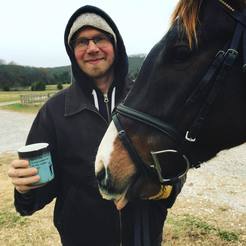 Piney and Evan, my Valentines this year! Piney and Evan, my Valentines this year! Although it is a bit scary (global warming anyone?), we have barely had a winter here in Fayetteville. It has been awesome to keep the lugging of frozen buckets, three layers of blankets, and ice down to a minimum. There have been only a few days where it has been too cold/wet/frozen to work the horses, which has been great. I've been using the winter to really re-focus on Stromboli's dressage. Stromboli was supposed to have some time off to rest and repair after Texas Rose, but after three weeks in the pasture with no riding he became a terrorist, rampaging around, putting his leg through the fence (twice) and taking out his excess energy on Piney and Tonic. He definitely doesn't need to be doing gallop sets, but putting him back into work on a 3-4 day/week schedule has made him a much happier horse. He left last week for more intense dressage training with Claudia Cooley in Springfield, MO. I'm looking forward to more lessons on both horses, and pretty soon it will be time to get Stromboli jumping and galloping again in preparation for our first real event of the season! The warm winter has also allowed me to finally get Stromboli's "little brother" (in looks only) going. With Never Ceasing (Piney), I have been focused on building fitness slowly with lots of trail rides, field work, and a little dressage. I believe that building this fitness is so important, especially in a young or old horse, as I want them to have the physical ability to do what I ask of them. When it comes time to go to a show or other outing, the last thing I want is my young horse coming home sore because I didn't prepare him fully, and then associating that experience negatively. Piney has taken a lot longer to come into his own than I expected. He has never had any kind of bad behavior, except some nervousness and herd-bound behavior on excursions, but until recently, he has always been very "un athletic" seeming, slow, uncoordinated, and had a bit of a weird shaped body. Some shoeing changes, moving him to the barn with the other big boy geldings, and most importantly, giving him the time to grow, has finally made him into an athletic and super fun horse to ride! I have a smile on my face every time ride him! I'm so glad his withers are finally higher than his butt. I feel so lucky to have two amazing horses that are so different, yet talented in their own way. We also have a lot of exciting new developments at the farm, that will be announced in the coming months! Last month, we went to Feather Creek Schooling Horse Trials. I rode Piney in the intro division (18") and he jumped clean in both XC and stadium to finish on his dressage score! Majorly proud of this guy, who had barely jumped a whole stadium course, never mind XC. He cantered around the whole XC course in perfect rhythm and is extremely brave. Stromboli improved in dressage, scoring a few points better than usual, and put in a beautiful clean Prelim SJ round. Unfortunately, he slipped and fell after coming through the finish flags, so I elected to only run him around part of the XC. Thankfully, we both are totally fine, and I learned a hard lesson that he definitely needs back shoes/studs for any kind of jumping on turf. On February 5th, we went to Stone Ridge Eventing's schooling horse trials. Piney was really improved over Feather Creek, but the courses were much more difficult. We had a few silly/green moments, but he has an incredible attitude, definitely made progress, and is well on his way to becoming a real event horse! So so proud of this horse. Stromboli also went to Stone Ridge and did two dressage tests, scoring a personal record of 36 and 38! |
Details
Christy ZweigAdventures eventing as a semi-pro in the mid-south. Archives
April 2024
Categories |
Proudly powered by Weebly


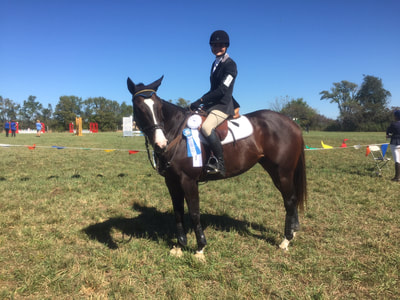
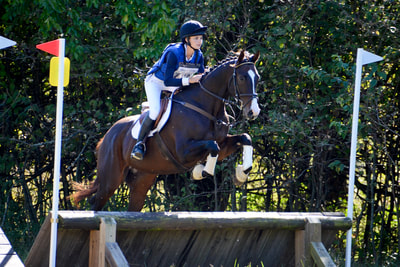
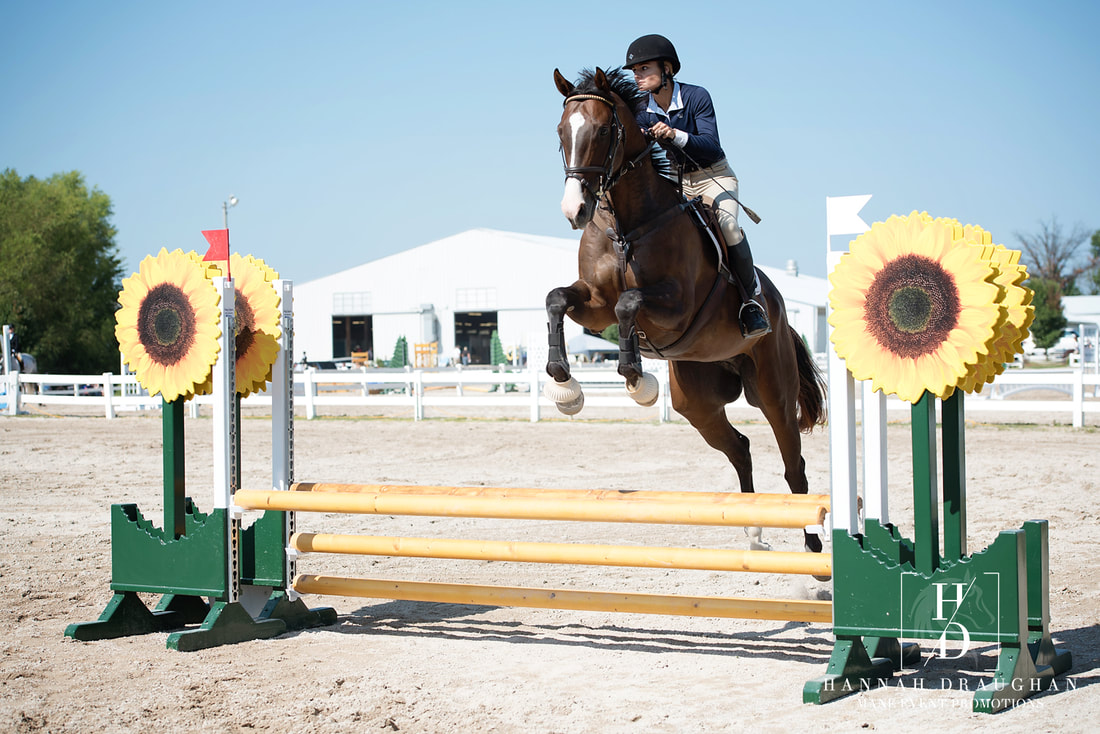
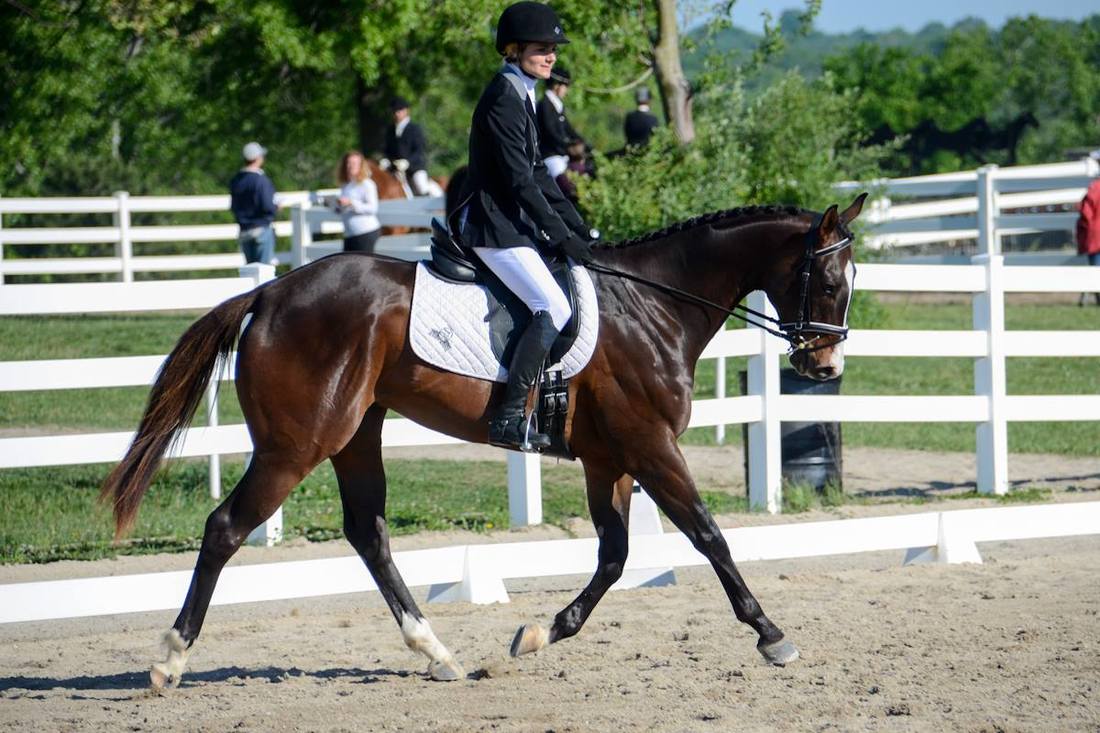
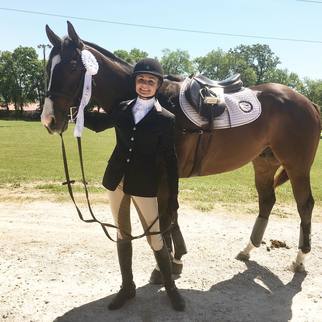

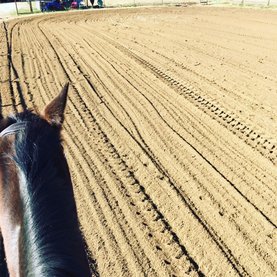
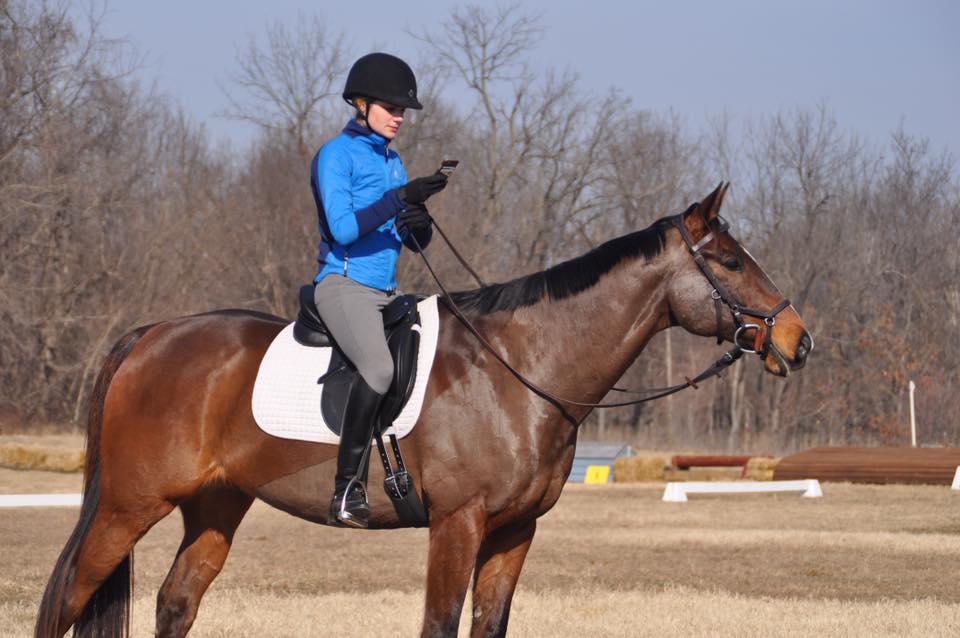
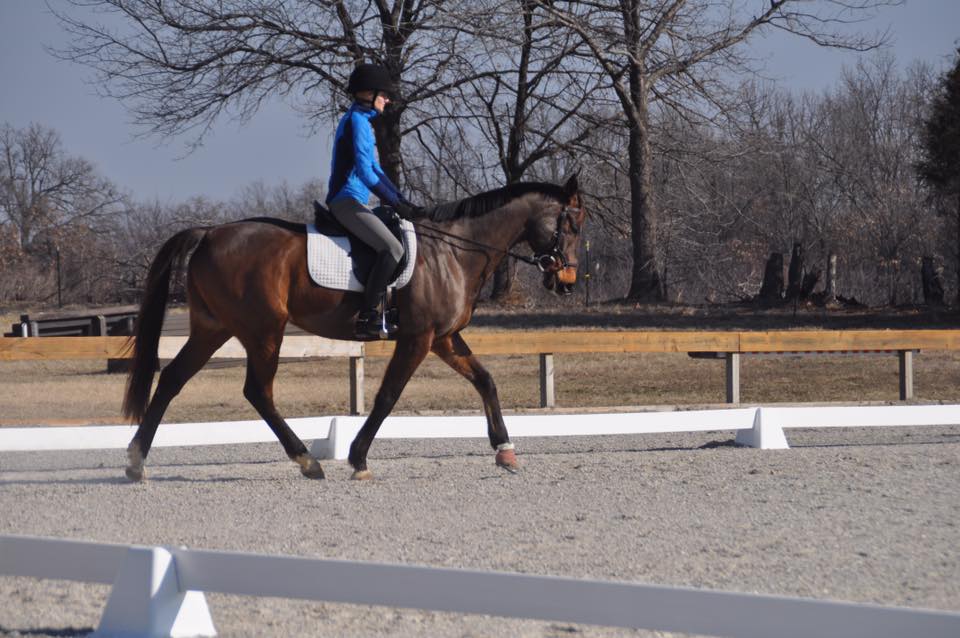
 RSS Feed
RSS Feed